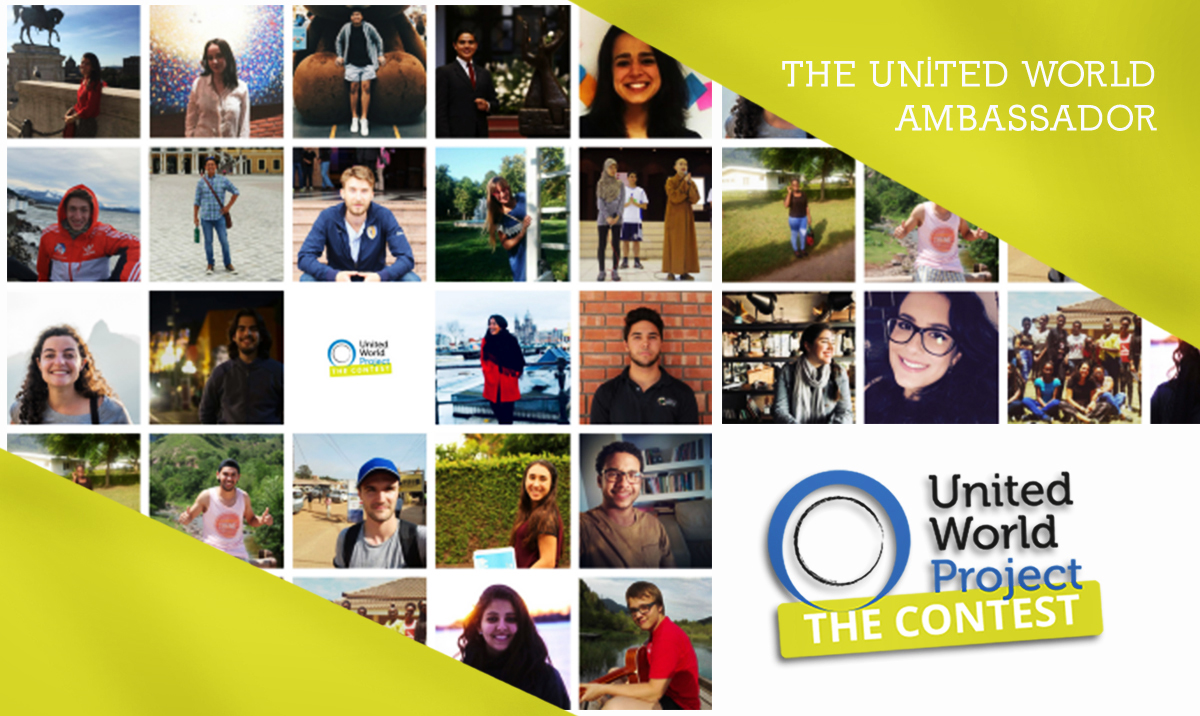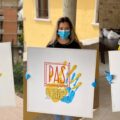
Workshop
Philippines: example is stronger than the river’s flow
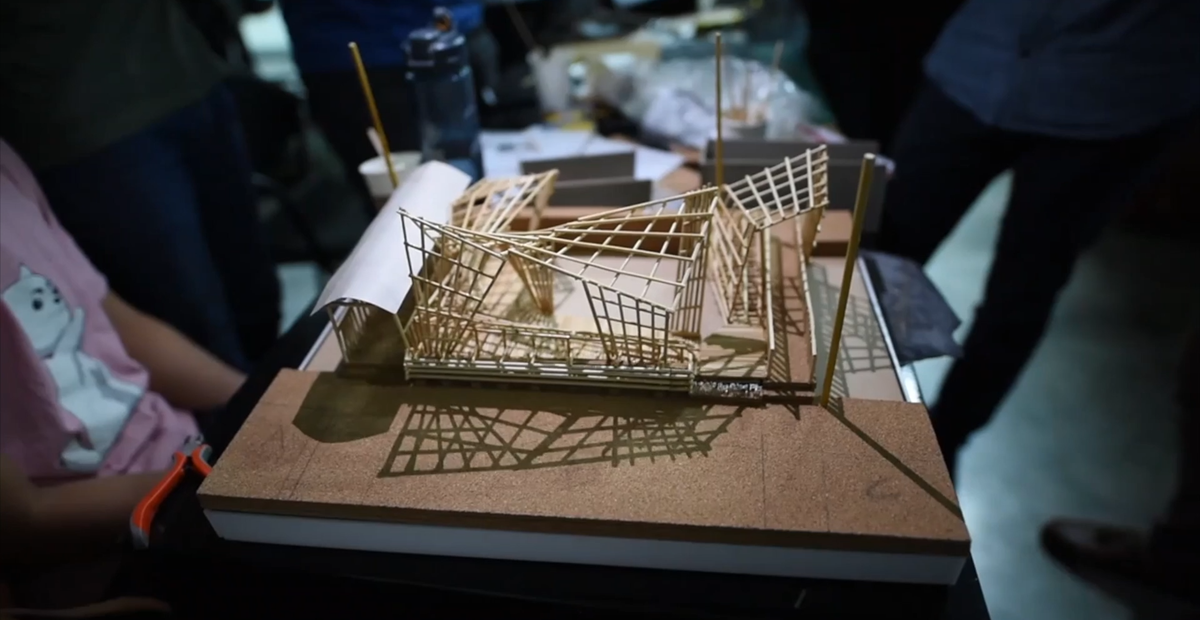
Swimming against the current is always a challenge. In a polluted river it becomes so much harder. But despite the obstacles, a teacher in the Philippines decided to embrace and transform the deepest scars of a desolate urban space, stimulating public awareness.
Architect by profession, teacher by vocation, Maria Cynthia Funk, known as Choie (or Loli) Funk is known for forging relationships with and within local communities. While teaching at the School of Design and Art, De La Salle College of Saint Benilde in Manila, she was appalled at the high levels of pollution in and around the River Pasig flowing through the heart of the capital city. But with her students, she allowed herself to be inspired by what she saw and together they began to think of creative ways to reclaim these public spaces.

In recent decades, the urban growth of Manila has increased at a furious rate. The population has surged from 5 million in 1975 to 12 million in 2010. The capital of the Philippines contains many slum areas which are now home to around 3 million people. Rivers like the Pasig flow through the city, its streets and rubbish tips, accumulating around 6,000 tonnes of refuse every day.
This bleak urban scenario gave rise to the “Estero Pavillion Project”. Students and teaching staff from two schools and three universities combined to design a large Pavillion structure of bamboo envisioned to unite two foot-bridges. The aim of the structure was to create public spaces which could encourage social interaction involving the community, and to reinforce the spirit of caring about a common physical space, about shared relationships and environments. “We are responding to existing problems: poverty, drugs, and a culture of death. Everything is connected and the government can’t be the only one that takes care of the people”, explains Loli, underlining the fundamental role citizens have in tackling certain issues.
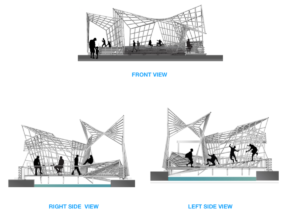
The project is composed of three spaces, three bamboo structures which together form a single unit. The first, designed for youngsters, is called “Laro” and is dedicated to games and recreation. The second, called “Tambay”, is a meeting place designed to facilitate community relationships and the sharing of experiences. The third, called “Kain”, is an area specially for promoting the culture of food, which too can be a means of forging links between the members of a community. This innovative project was welcomed for its physical, aesthetic and social ingenuity. But along the way, something went wrong. The completed Pavillions disappeared!
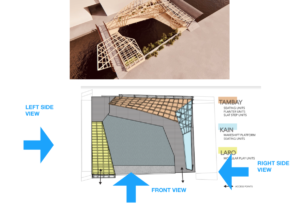
The knots in the bamboo
Bamboo stalks are recognisable for their nodes or segmented culms. These knots strengthen the bamboo cane and the branches extend from them. Without nodes, the structure of the bamboo would be weak and unusable.
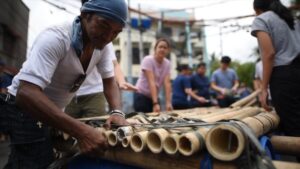
For Loli, a society without “nodes”, without relationships that are constant, without a culture of responsibility and care for each other, is a fragile structure. And it was a community without nodes which weakened this social experiment. The Pavillions were stolen, the river is still being polluted and lack of public spaces is an ongoing problem, but not the only one.
“In the Philippines we do everything for survival and sometimes we forget the soft sciences. Everyone works just to get out of the situation they’re in. This is very painful for me to say, because I don’t want to mean bad things for society, but sometimes I call it the fatherless society”. This is Loli’s response when asked about all the difficulties and social concerns that have hindered the process, and the pains besetting these communities. In this period of the pandemic and lockdowns, here the most pressing fear is not necessarily catching the virus. As Loli observes, “most of them will die of hunger, before of Covid”.
Seeing so many youth with strength and energy to do many things keeps her motivated. But it also emphasises the great need to raise awareness, to give meaning to what they do. For this to happen, she adds, education has a fundamental role to play. Learning to take care of others isn’t something you pick up from one day to the next. But if someone wants it, and they share it with others, the idea spreads and starts to create a culture. As Loli reflects, “a culture is something that you lock-in and let you build something together. We have built a culture that doesn’t care, so programs like #DareToCare is fantastic because it reminds us that caring for the next person is a challenge, a choice, and a commitment”.
My decision is to be a community builder, this is the architecture I want to practice. Architecture goes beyond buildings, it is a service.
Loli Funk
Loli’s choice and vocation to take care of others is stronger than the river’s flow and more resistant than any structure. This experience has helped her to understand that the project has not ended and we can learn from our mistakes.
“It is a social experiment because it may fail, as it has, physically failed because now the pavilion is not there anymore. You have to be prepared: politically, social and economically”, explains Loli. “This is a social experiment because the beauty of an experiment is the exploration, and right now, whatever mistakes, they are not mistakes, they are lessons. The next thing is the creation of knowledge”.

